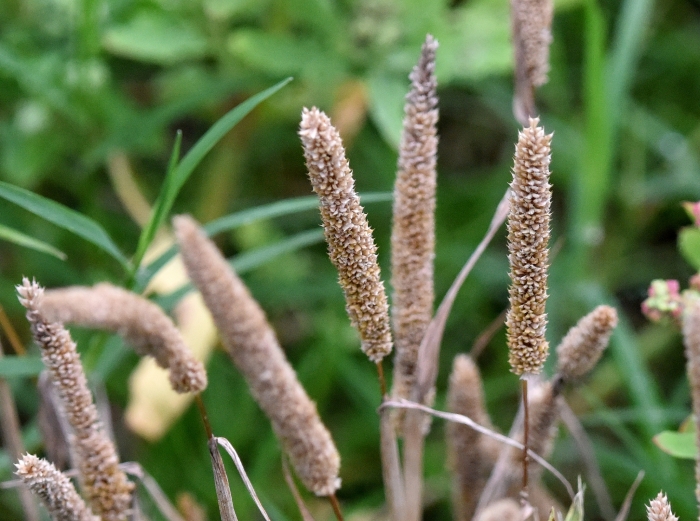Shortawn Foxtail
(Alopecurus aequalis)
Shortawn Foxtail (Alopecurus aequalis)
/
/

© Zinogre
CC BY-SA 4.0
Image By:
© Zinogre
Recorded By:
Copyright:
CC BY-SA 4.0
Copyright Notice:
Photo by: © Zinogre | License Type: CC BY-SA 4.0 | License URL: http://creativecommons.org/licenses/by-sa/4.0/ | Uploader: zinogre | Publisher: iNaturalist |

























Estimated Native Range
Summary
Alopecurus aequalis, commonly known as shortawn foxtail, is a perennial grass that is widespread across the temperate Northern Hemisphere, including Eurasia and North America. It is typically found in wet meadows, marshes, and along the margins of freshwater bodies such as ponds and ditches. This grass prefers moist, fertile soils and is often seen in areas that are seasonally flooded. Shortawn foxtail grows in tufted bunches with erect stems ranging from 8 to 28 inches in height and has narrow, soft leaf blades. The plant features a distinctive cylindrical inflorescence that is pale green to purplish, with anthers that can be white, yellow, or bright orange, and blooms from late spring to early summer. The flowers are not particularly showy but are interesting upon close inspection.
Shortawn foxtail is valued for its ability to stabilize soil and its tolerance of wet conditions, making it suitable for riparian plantings and erosion control. It is also used in water gardens and as a component of wetland restoration projects. In cultivation, it requires full to partial sun and can withstand shallow standing water for up to two months during the growing season, which makes it adaptable to fluctuating water levels. It is generally low-maintenance but can become invasive if conditions are ideal. The variety var. sonomensis, known as Sonoma shortawn foxtail, is a rare California endemic and is federally listed as an endangered species due to its limited distribution and habitat loss.CC BY-SA 4.0
Shortawn foxtail is valued for its ability to stabilize soil and its tolerance of wet conditions, making it suitable for riparian plantings and erosion control. It is also used in water gardens and as a component of wetland restoration projects. In cultivation, it requires full to partial sun and can withstand shallow standing water for up to two months during the growing season, which makes it adaptable to fluctuating water levels. It is generally low-maintenance but can become invasive if conditions are ideal. The variety var. sonomensis, known as Sonoma shortawn foxtail, is a rare California endemic and is federally listed as an endangered species due to its limited distribution and habitat loss.CC BY-SA 4.0
Plant Description
- Plant Type: Grass
- Height: 1-2.5 feet
- Width: 1-2 feet
- Growth Rate: Moderate
- Flower Color: N/A
- Flowering Season: Spring, Summer
- Leaf Retention: Deciduous
Growth Requirements
- Sun: Full Sun, Part Shade
- Water: High
- Drainage: Medium, Slow
Common Uses
Erosion Control, Low Maintenance
Natural Habitat
Wet meadows, marshes, and freshwater margins
Other Names
Common Names: Shortawn Foxtail, Short-Awn Meadow-Foxtail, Capim-Rabo-De-Rabosa-Laranja
Scientific Names: , Alopecurus aequalis, Alopecurus aequalis f. fluitans, Alopecurus aequalis f. foliosus, Alopecurus aequalis f. natans, Alopecurus aequalis f. nigricans, Alopecurus aequalis f. notacens, Alopecurus aequalis f. violaceus, Alopecurus aequalis subsp. amurensis, Alopecurus aequalis subsp. amurensis
GBIF Accepted Name: